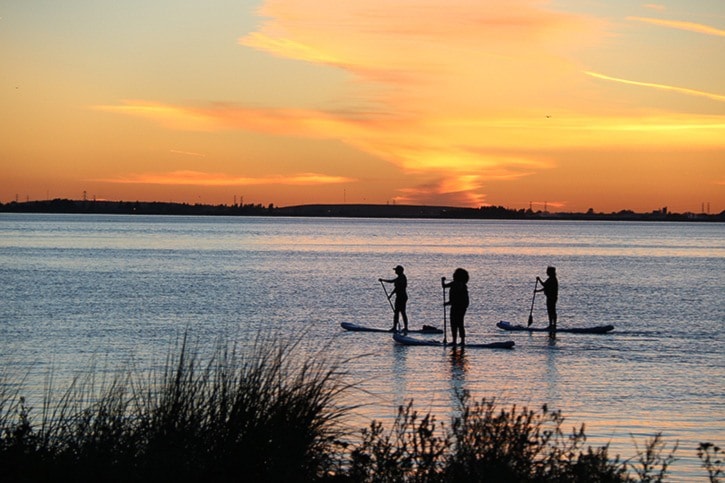Water quality at White Rock and Crescent beaches is among the best its been in a decade, according to an analysis by Peace Arch News, but one itching problem isn’t going away.
Metro Vancouver tests beach water around the region each week from May to September, and bacterial counts at all Peninsula beaches have been falling in recent years, according to water quality data examined by PAN. This year alone, counts are well below the 10-year average.
So far in 2016, Crescent has an average count of 12 E.coli per 100 millilitres, compared to last year’s average of 16 and the 10-year average of 23.
At Crescent Beach north, the average sample this year is 14, while last year’s average was 17 and the 10-year average is 24.
Health authorities deem water unsafe for swimming if the bacterial count reaches 200.
In White Rock, this year’s average at East Beach is 18, while west of the pier it’s 26. The combined 10-year average is 33.
By comparison, the most recent sample of Vancouver’s English Bay was 42, Kitsilano Beach 29 and Centennial Beach 10.
“We’re quite proud of the water, it’s obviously our biggest asset. It’s important to us,” White Rock Mayor Wayne Baldwin said.
In recent years, White Rock has concentrated on sweeping streets and cleaning catch basins to prevent debris flowing into the storm sewers, said Baldwin.
“Unless you clean it out, it just washes down onto the beach. We’ve been watching that pretty closely and working at it quite strongly to keep those catch basins and the gutters and so on as clean as we can.”
Baldwin acknowledged the city has had major incidents that affected water quality – a flood in 1999 and power outages at pump stations. But he said generators are now in place to power pumps in an emergency.
Darren Marshall, owner of Feral Boardsports on Marine Drive, has seen an increasing number of people drawn to White Rock beaches, noting he started his business five years ago with six paddle boards and now has more than 40.
“People love it,” he said. “When the tide’s out people get so much room for themselves, whereas if you’re on any other beach you literally feel like you’re crammed on a busy day – you’ve got somebody stuck on your shoulders.”
Owen Croy, manager of parks for the City of Surrey, attributed Crescent’s good numbers to fewer septic tanks, a good city sewer system and fresh water flow.
“We have considerable amounts of fresh water coming in to Mud Bay, both from the Nicomekl and the Serpentine. We don’t have too many sources of pollution in terms of sewage in either of those rivers.”
What is persisting at Crescent, however, is swimmer’s itch.
First found at Surrey’s beach in 2001, the itch is caused by a parasite in water snails. In hot months, when the parasite is present, it can land on human skin and cause a rash.
“The snail’s not going away. It appears to be here to stay,” Croy said.
A decade-old proposal to remove snails from strategic locations was denied by federal authorities due to concern for “potential damage to the fragile intertidal ecosystem,” according to a city report. Surrey has instead opted to manage people’s reaction to the parasite by installing signs and showers at Beecher Street and Blackie Spit.
Croy said swimmers can reduce the chance of infection by applying water-proof sunscreen before entering the water, drying off with a towel immediately after exiting the water and showering with fresh water as soon as possible. Avoiding areas with high concentrations of snails can also help.
But so far this year the city hasn’t received a complaint about swimmer’s itch, said Croy.
“It’s more or less an inconvenience as opposed to a major health problem,” he said. “If people use the proper precautions… you’re going to be able to deal with it.”
